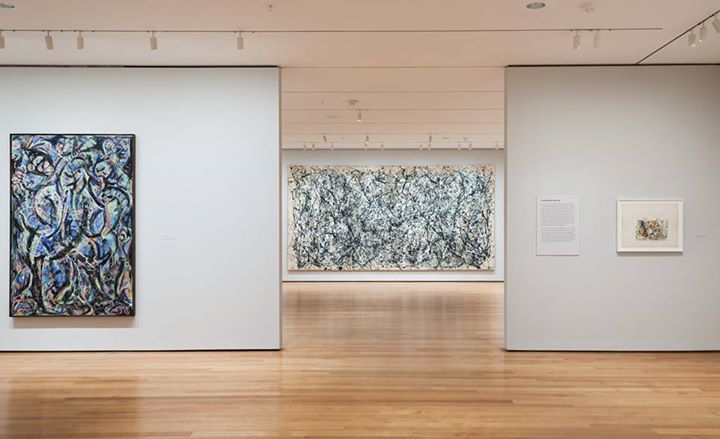Pollock exhibit at MoMA goes beyond the splatter
Photo by Thomas Griesel. © 2015 The Museum of Modern Art, New York
Featuring over 50 works, “Jackson Pollock: A Collection Survey, 1934–1954”, is on display at the MoMA from November 22, 2015 to March 13, 2016
November 30, 2015
Very often, Jackson Pollock’s work as an artist is reduced to his drip paintings. A new retrospective of his work at the Museum of Modern Art shows that the style of splatter painting was the culmination of an eclectic but consistently great career.
Many will be surprised by the relatively normal look of Pollock’s early work. Here, Pollock shows his debt to many trends of early 20th century art. “Circle,” a small green and red painting with some animal figures, is clearly influenced by Frida Kahlo and Diego Rivera. “The Flame” is an intense, but somewhat abstracted depiction of fire that resembles Picasso’s paintings of birds. The best of this period are two landscape, which show the wide open space of Pollock’s Wyoming childhood, but incorporate blue, gold and red to create a very creepy skyline.
The next section of the exhibition includes Pollock’s work from 1944 to 1947. This is thought of as a transitional period in his career, because Pollock was moving away from his early representational work toward the pure abstraction of his final period.
Several paintings are as impressive as any of Pollock’s later works. “Full Fathom Five” gives a sense of Pollock’s experimentation with his materials. There are layers upon layers of thick aqua paint, so much so that the work is three dimensional. Also visible are materials that Pollock pressed into the painting to give it depth, including cigarette butts and a key. Another standout in this room is “Shimmering Substance,” a tribute that Pollock made to his house in the Hamptons. It is made up of semi-circular strokes of bright, cheerful white, yellow and blue. Pollock succeeds in conveying a place and a mood completely, without painting physical forms.
Only after seeing all that came before them do we see Pollock’s most acclaimed works, the giant drip paintings. Viewed alone, these paintings often strike people as arbitrary and craft-less. Some have even accused Pollock of cynically creating art that he knew was bad. However, experiencing the paintings in person removes such doubts. These works take Pollock’s work to its natural end. Pollock, over the course of his career, moved from the depiction of things to work that aims for pure feeling. It is very easy to lose track of time staring at the drip paintings. They feel like endless mazes.
MoMA deserves praise for the exhibit’s construction. With only three rooms, it enables the viewer to appreciate each painting without feeling overwhelmed. The plaques are very well done. They provide straightforward background information that is always relevant to the work included.
“Jackson Pollock: A Collection Survey, 1934–1954” is on display through March 13, 2016. Admission is free with NYU ID.
A version of this article appeared in the Nov. 30 print edition. Email Tony Schwab at [email protected].























































































































































